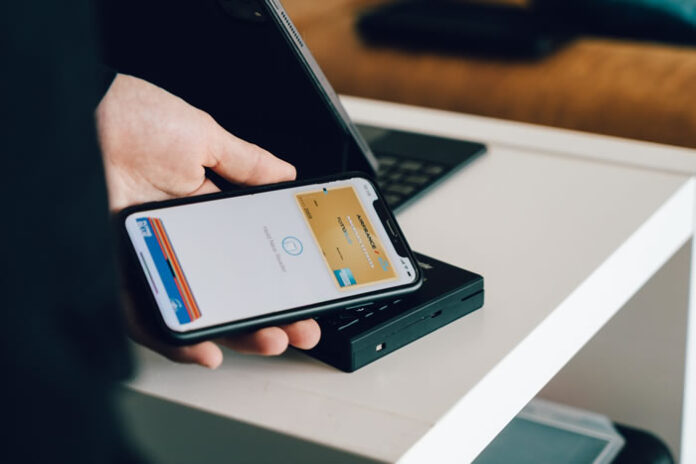Considering the changes over the last year and a half brought on by the COVID-19 pandemic, safety and security are at the top of the list when it comes to everything we do, including when shopping and transacting in-store. In an increasingly digital world ripe with technological advances, consumers are beginning to ditch traditional payment forms, like plastic credit cards and paper cash, in favor of a digital alternative: mobile wallets. Over the last few years, mobile wallets like Apple Wallet and Google Pay have become the new normal as 68% of people are now using a mobile payment app. Globally, there has been a significant rise of mobile wallets and contactless transactions.
Mobile Wallet Shift
Before COVID-19 hit, mobile wallets served as an easier-to-use payment method in comparison to traditional credit cards and cash. Rather than having to search for their card and remember their pin code or locate and count out their cash, consumers could just wave their phones and the transaction would be completed.
However, from the start of the pandemic to now, the rise in mobile wallets usage can be attributed to the safety and security of contactless transactions. Since consumer safety has taken top priority throughout COVID-19, the predominant reason for mobile wallet usage has shifted from convenience to safety.
With the health and safety concerns brought on by COVID-19, consumers began to desire a completely contactless transaction experience. Due to the rise of mobile wallets, they allow for a contactless way to transact where exchanging physical cards, cash, and coins are no longer considered a “safe” option.
Contactless and Clean
As we embark on year two of COVID-19, cleanliness remains as important as ever. With contactless payment, consumers can take control of their hygiene, lessening the chance of coming into contact with the multitude of bacteria, viruses, and DNA found on cash, coins, credit, coupons, loyalty, and gift cards. So, while mobile wallets initially served as a convenient alternative to traditional payment methods, COVID-19 proved that mobile wallets are also a safe and hygienic mode of transaction for the over 2.3 billion people who use them.
Mobile wallets are “safe” in the hygienic sense as they eliminate the need for physical contact during transactions, but also because they offer a more secure alternative to physical cash and card payments. When a credit card is added to a mobile wallet, the card number itself is not actually being stored on the device. Instead, each transaction is “tokenized” using a unique code that verifies the payment without actually sharing the card number. Each mobile wallet transaction is highly encrypted, generating a unique set of numbers that does not reflect the cardholder’s account.
Secure and Efficient
Mobile wallets also use biometric authentication to secure payments. Biometric technology offers increased security by using physiological and behavioral traits in place of a username, password, or pin. Unique physical characteristics such as a fingerprint or facial features along with behavioral characteristics (like a person’s voice) are used to verify a person’s identity. This type of security technology has proved successful and can be seen in use every day for airport security, building entrance security, in securing personal devices like laptops, tablets and phones, online banking authorization, and now mobile wallet payments.
Biometric technology is more secure in that it identifies people not by what they have, like a password, pin code, or physical card, but by who they are. For example, compare a tangible card being stolen to a phone being stolen. If someone gets ahold of your physical credit card, they can easily use that card to make multiple fraudulent charges until you are able to cancel the card, which could be a while if you do not realize your card has been lost or stolen in the first place.
On the other hand, if your phone is stolen, whoever took it has to get into the phone, and then has to provide authentication in order to make a payment through the mobile wallet. Given that the biometric technology uses unique, individual characteristics for authentication, it is near impossible to rack up fraudulent charges with a mobile wallet.
Final Thoughts
As we begin to return to a small semblance of normalcy, mobile wallets will continue to grow as a dominant payment type in our increasingly digital world. Just last year, 92.3 million US consumers over the age of 14 used proximity-based mobile payments at least once during a six-month period. In 2021, shoppers almost always have their smartphones with them, proving the continued convenience of mobile wallets. Additionally, consumers will likely not revert to touching things more than they might have to; the comfortability of touching a payment terminal or handling a plastic credit card or paper cash has changed drastically with the pandemic and will likely remain this way.
This continued desire for convenience and to stay safe and clean will further accelerate the use of mobile wallets. At the rate mobile wallets have grown recently, it is possible that in a few years’ time, this country may adopt mobile wallets the way several Asian countries have, with most commerce transacted from the mobile phone.
















